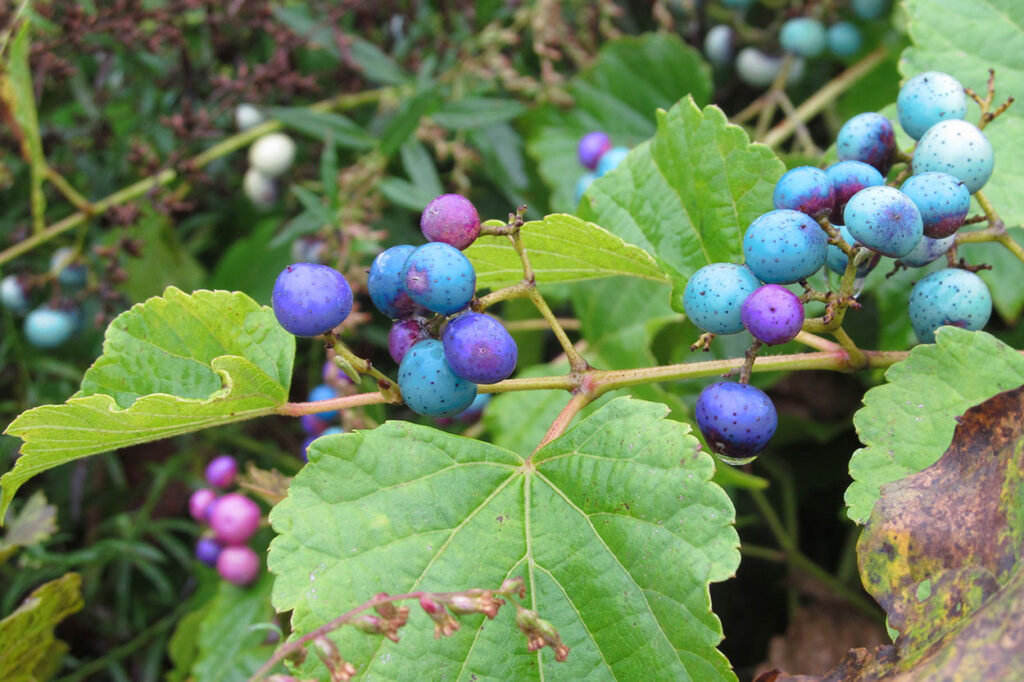
By Lauren Brown
Does it grow on your property? If so, GET RID OF IT! This woody vine goes by many names – porcelain vine, porcelain berry, Amur peppervine, or wild grape – but one of its nicknames is the kudzu of the North. Like kudzu in the South, porcelain berry spreads rampantly, engulfing trees and shrubs in its path and eventually killing them by blocking out the sunlight. If you drive out of New York, you will see it abundantly along the highways in the Bronx and Westchester County. Then you will see it some in Fairfield County, but you will undoubtedly see more if you go again in the near future. It is spreading.
Like so many invasive plants, porcelain berry is native to Asia, from where it was brought in the 19th century to be planted as an ornamental. The berries are spread by birds, and with no natural enemies, porcelain berry has spread far and wide in many parts of the country. It far more aggressive than Asian bittersweet.
Though one of the common names for porcelain berry is wild grape, it is NOT the wild grape that we often see climbing high over forest trees. That wild grape is native and harmless. With similar leaves, the two are easily confused until flowering and especially fruiting time. While the native grape has elongated flower clusters that hang down, the porcelain berry flower clusters are more or less flat-topped and point upwards. The fruits of the wild grape in our area – which rarely even appear – are uniformly dark, while those of porcelain berry – admittedly beautiful! – come in varying shades of white, blue, and purple.
Though there has been an infestation along Route 5 in North Haven for several years, we in Branford have so far not cursed with large manifestations of porcelain berry’s presence. However, this winter, a population was spotted in town, and the fruits were already dispersed, which means seedlings could start popping up anywhere. The owners of the property where it occurred have expressed an interest in controlling it, but this will not be an easy task. The very deep roots are almost impossible to dig up, and permanent control is almost impossible without the use of herbicides. If porcelain berry is on your property and you can’t undertake a large-scale control effort, at least try to cut back the flowering branches to prevent the plant from going to seed. Yes, the berries are the pretty part of its life cycle, but the native trees and shrubs of Branford will thank you.
PHOTO from Wikipedia: Porcelain berry fruits come in a range of colors from white to turquoise to purple.



